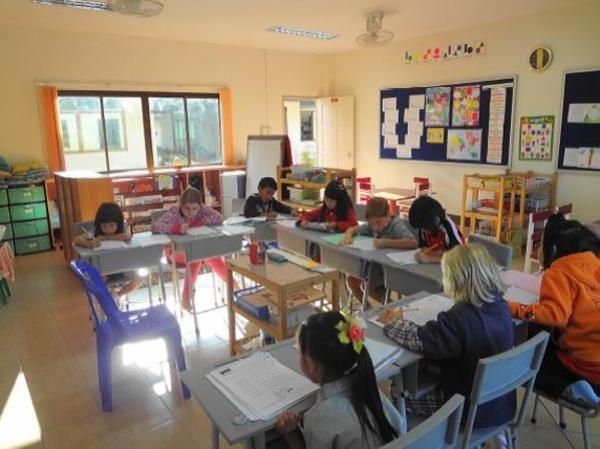The technique of “graphic dictation” is a drawing by cells according to a specific command given by the host, and is used both in preparing children for training in an educational institution, and directly in elementary school. This type of activity contributes to the development of not only fine motor skills, but also voluntary attention, observation, thinking and other cognitive processes.
Graphic dictations for preschoolers are a kind of fascinating game, which, in addition, will bring many benefits to children. Kids learn to navigate in space, in a sheet with cells, reinforce the concepts of "right", "left", "forward", "back". And the unusual pattern that will result from the task will be a kind of "prize" for preschoolers.
The teacher who conducts the graphic dictation must follow several rules. Firstly, preliminary explanatory work is carried out. Children need to be told that today they will get acquainted with a new exercise, by completing which they will receive an interesting drawing or pattern.
Secondly, before starting work, an adult (parent, caregiver) must himself put the red pen on the point where to start. This is necessary because only the teacher knows how much space will be needed for the drawing and where the lines will be sent.
One of the important conditions for successfully conducting a graphic dictation is complete silence in the room. It is necessary in the first place so that children do not stray, since even the slightest mistake can lead to the fact that the final result does not work, and the motivation for such exercises can decrease. If the lesson is held in a group, it is important to immediately discuss the moment with the guys. If problems arise, the child should silently raise his hand, and the adult should come up and provide individual assistance.

After the teacher began to dictate the graphic dictation, he should not utter any other words, moreover, repeat the task twice, especially when conducting an exercise in a group. Otherwise, some of the children doing the work right from the start may get confused and make mistakes. If the child stumbles, he puts a pencil (or pen) on the table and waits until the group finishes the exercise. Only after that it is discussed why someone did not succeed in completing the task correctly, the work in which everything is done correctly is considered.
Graphic dictation is widely used by teachers in elementary school. This helps to develop spatial thinking and helps children organize their main work. The exercise is performed, most often, at the beginning of the lesson. Of course, the key point in the application of the methodology is the principle “from simple to complex”. That is, simple patterns or drawings are initially given. Having “filled” a hand in such exercises, children receive more difficult tasks. In addition to the main directions, the concept of “oblique” can be introduced. One of the simplest graphic dictations with which to start work is the following.
Children are invited to draw a cell down from the initial point, then to the right, up, right, down, etc. At the same time, you don’t have to dictate to the end of the line, and when the pattern by which the pattern is organized is no longer difficult to determine, suggesting the students to continue drawing on their own .